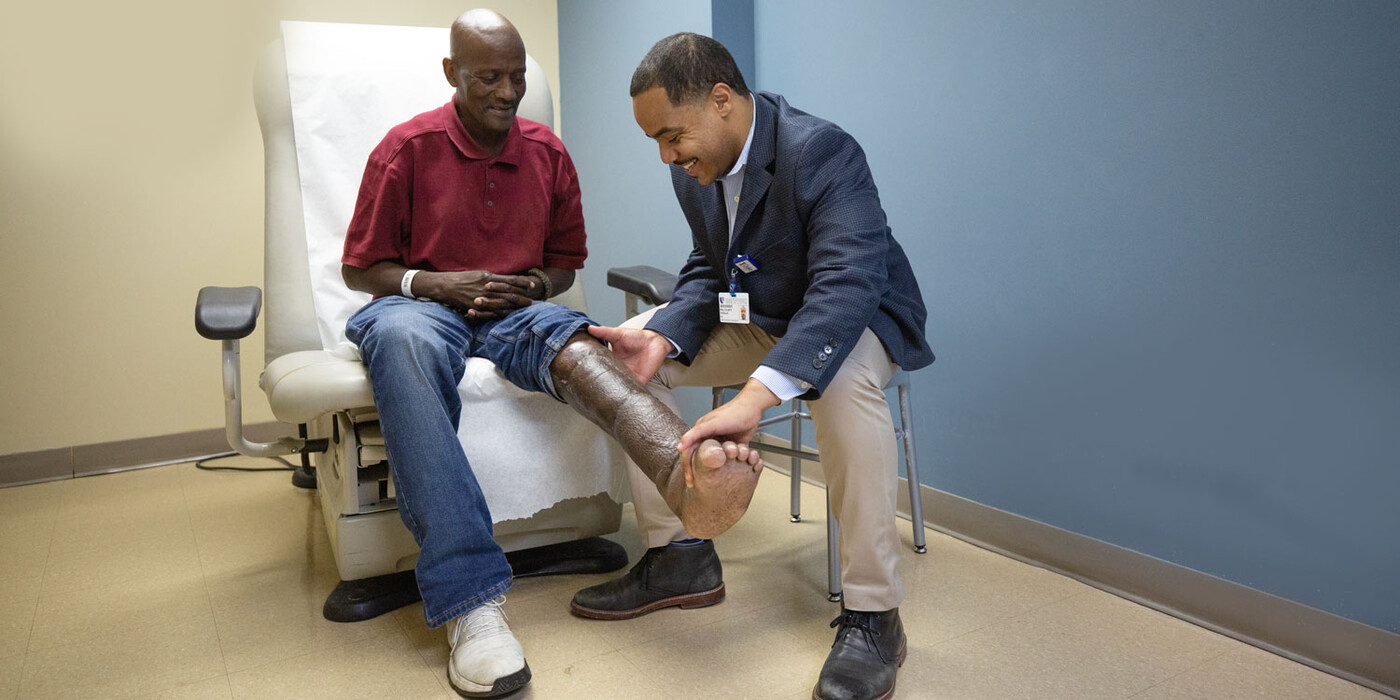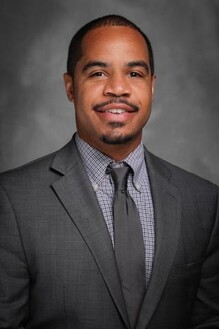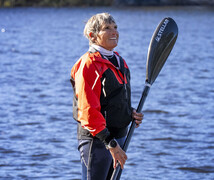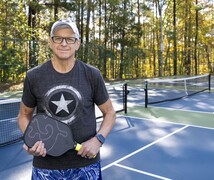A devastating traffic accident in November of 2021 left Bruce DeShazo clinging to life. After being airlifted from Roxboro, NC to Duke University Hospital, a lengthy hospital stay, and seven surgeries, DeShazo is fully healed and appreciative of every day. “I’m a Carolina fan, but I love Duke. Duke saved my life,” he said.
Everything Was Broken
The only thing 60-year-old DeShazo remembers about his accident is riding his motorcycle to work. After being hit by a car, he was rushed by helicopter to Duke University Hospital. “Everything on my left side was broken -- my foot, my ankle, my hip, my shoulder, my arm,” DeShazo said. The most serious injury was his severely broken, mangled left leg.
A Novel Solution
When DeShazo regained consciousness, he met Malcolm DeBaun, MD, an orthopaedic trauma surgeon at Duke Health, who would care for him for the next 18 months. “Bruce had a limb-threatening injury but because of the severity, he wasn’t a candidate for typical bone reconstruction procedures,” he said. At other institutions, this would have meant an above-the-knee amputation. But Dr. DeBaun knew there had to be a better option.
He collaborated with his colleague, Geoffroy Sisk, MD, a plastic and reconstructive surgeon at Duke Health, and a local company that creates individualized 3D-printed orthopaedic implants. “We needed a new solution for his problem because it was very complex,” said Dr. DeBaun.
A Three-Part Plan
After several meetings, the team had a plan. Although it came with risks and multiple surgeries, DeShazo -- an active man who wanted to stay that way -- accepted the doctors’ proposal. First, surgeries were performed to remove debris and temporarily stabilize the leg. Second, Dr. Sisk used advanced microsurgery to transplant two muscles from DeShazo’s back to his lower leg to cover and protect the the healing limb. Third, Dr. DeBaun replaced DeShazo’s lower leg bone (tibia) with a customized 3D titanium implant. DeShazo participated in intense physical therapy throughout the process, which took a year and a half.
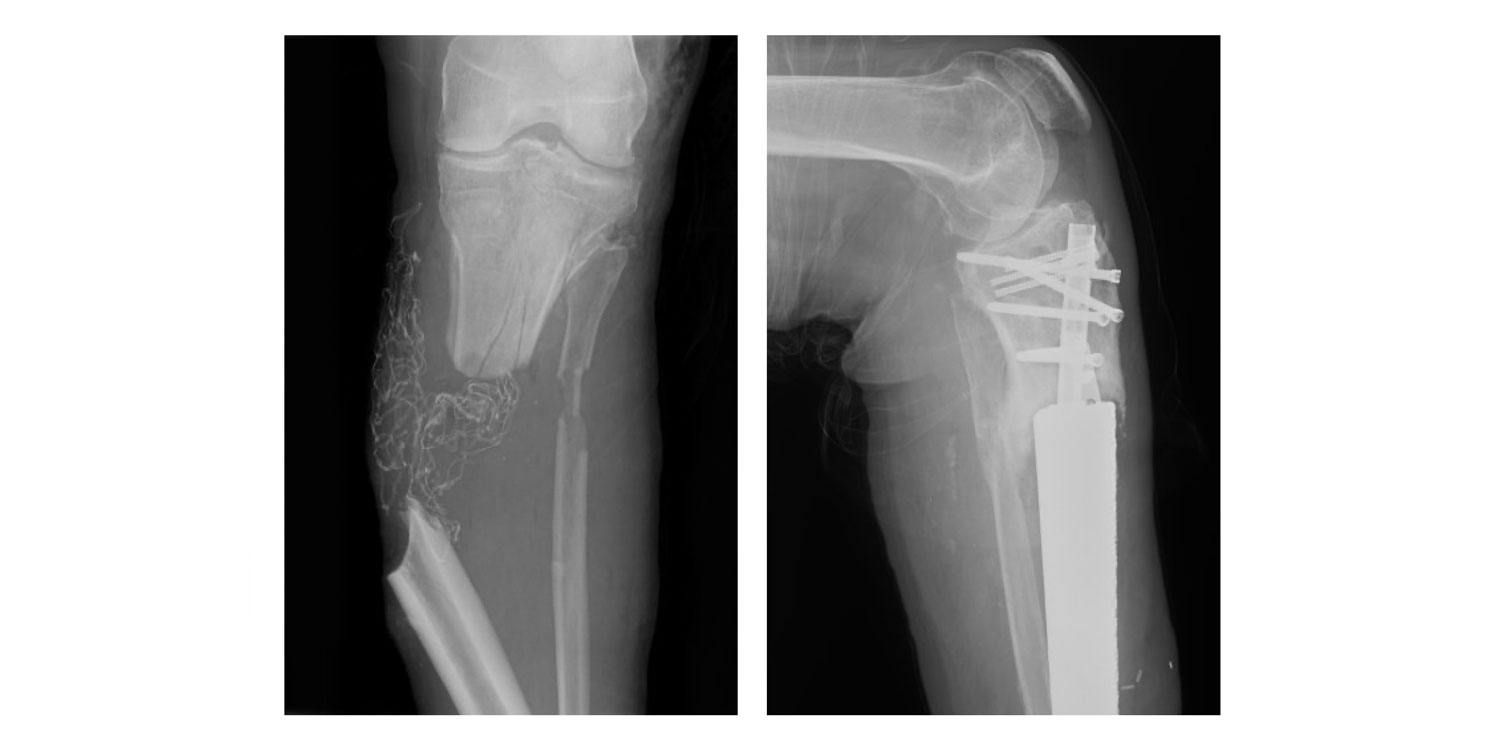
Healing More Than Physical Injuries
In addition to physical pain, DeShazo had to cope with the impacts of the accident on his mental health. He was plagued by nightmares, and because of COVID safety restrictions, visits from his family were limited. DeShazo’s nurses quickly recognized symptoms of PTSD and connected him with the appropriate Duke mental health providers. “It’s not just a physical insult,” explained Dr. DeBaun. “There's a tremendous mental aspect to trauma. It could be underappreciated at other centers, but this is something Duke is uniquely suited for and in touch with.”
The Final Surgery
During DeShazo’s seventh and final surgery, a 3D titanium rod was implanted to replace his lower-left leg and stabilize it with rods, plates, and screws. He’s returned to Roxboro, where he can once again enjoy life. “My life went back to pretty much normal, just a slower pace. I am so thankful because I didn’t think I would ever be able to walk again.” Dr. DeBaun agreed. “He’s super happy that he has a limb to stand on, and it's his own with a little bit of titanium augmentation. It’s miraculous.”
